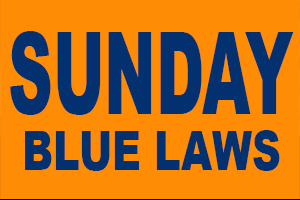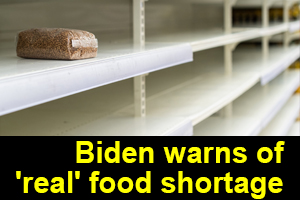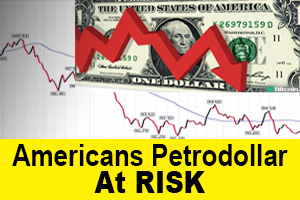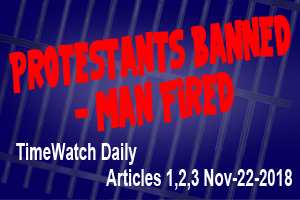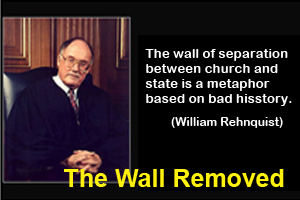
The Alliance Between The Cia And The Vatican
Excerpt from Operation Gladio: The Unholy Alliance Between The Vatican, The CIA, and The Mafia, by Paul L. Williams (Prometheus Books, 2015). Reprinted with permission from the author
Chapter 3: The Vatican Alliance
The Institute for Works of Religion (IOR), commonly referred to as the Vatican Bank, is a privately held financial institution located inside Vatican City. Founded in 1942, the IOR’s role is to safeguard and administer property intended for works of religion or charity. The bank accepts deposits only from top Church officials and entities, according to Italian legal scholar Settimio Caridi. It is run by a president but overseen by five cardinals who report directly to the
Vatican and the Vatican’s secretary of state. Because so little is known about the bank’s daily operations and transactions, it has often been called “the most secret bank in the world.” Ari Jorish, Forbes, June 26, 2012
Created by Pope Pius XII and Bernardino Nogara on June 27, 1942, the Istituto per le Opere di
Religione (IOR), commonly known as the Vatican Bank, is located within the Bastion of
Nicholas V, a round tower that had been constructed in 1452 to ward off the threat of a Saracen invasion. The bank remains a sovereign financial agency within a sovereign state. It is an entity unto itself, without corporate or ecclesiastical ties to any other agency of the Holy See. As such, it cannot be compelled to redress wrongs—not even the most egregious violations of international law. Nor can it be forced to release the source of any deposit. The bank resides under the direct jurisdiction of the pope. He owns it; he controls it.[1] Swiss guards are stationed to guard the entrance to the bank, and the hermetically sealed bronze doors open only to select members of the Roman Curia—the governing body of the entire Roman Catholic Church.[2]
Nogara, who became the first president of the IOR, initiated a process of destroying all records of the bank’s transactions, including deposits and investments, on a regular basis, so that its operations remain free and clear of public and private scrutiny. Anyone seeking information regarding the dealings of the bank, even its corporate organization, discovers little more than empty file folders within the Vatican archives. The trails of paper flow among three separate and distinct boards of directors. One board consists of high-ranking cardinals, the second of international bankers, and the third of Vatican financial officials. But even these records cannot be subpoenaed for inspection. They remain confidential documents of the sovereign state that can only be examined only by special permission from the pope.[3]
Of course, the Holy See dutifully publishes financial reports on a yearly basis. The reports, displaying gains and losses, appear to be exhaustive. They contain meticulous records of the incomes and expenditures of every agency within the Holy See—except the IOR.
The name of this agency never appears on any balance sheet. From all published reports, this ecclesiastical entity is nonexistent and the Roman Catholic Church survives solely as a hand-tomouth institution.[4]
Investigators following the paper trail inevitably come to a dead end. All internal documents and external reports contain statements exempting the Vatican Bank, or IOR, from any ruling or standard of protocol. They are punctuated by such phrases as “always leaving intact the special character of the IOR,” “not including the IOR,” or “with full respect for the juridical status of the
IOR.”[5]
Because of its clandestine workings, millions can be deposited into the IOR on a continuous basis and channeled into numbered Swiss bank accounts without the possibility of detection. It was the perfect place for the CIA and the Sicilian Mafia to launder their ill-gotten gains of the narcotics trade and for the Roman Church to fund its political mission.[6] And, according to Moneyval (the anti-money-laundering committee of the Council of Europe), it remains one of the world’s leading laundries for dirty cash under Pope Francis.[7]
Contributions from Uncle Sam
In 1947, Pope Pius XII was more than willing to allow black money to flow through his bank. The Truman Administration already had funneled more than $350 million to the Holy See for economic relief and political payments.[8] The pope used these funds to reactivate the Christian Democratic Party (CDP), which had been dismantled under the reign of Mussolini, and to establish twenty thousand CDP cells throughout Italy.[9] The Holy Father also obtained an additional $30 million from Truman’s aid package to create Catholic Action, an organization to generate propaganda against the Communists.[10]
American cardinal Francis Spellman was now called upon to spearhead the Vatican-sponsored campaign to encourage Italian Americans to urge their relatives in the old country to vote against Togliatti and the other Communists. “The fate of Italy depends upon the forthcoming election and the conflict between Communism and Christianity, between slavery and freedom,” Spellman wrote in a pamphlet that was distributed in Catholic parishes throughout the United States.[11] The cardinal also arranged to bombard Italy with radio messages from American celebrities such as Frank Sinatra, Bing Crosby, and Gary Cooper, urging the people to rise up in support of the Christian Democrats in order to check the growth of Communism.[12]
Wild Bill’s Knighthood
Pius XII soon realized he would need millions more in cash from Uncle Sam, since 50 percent of the Italian people were now aligned with the PCI. He was no stranger to US intelligence agents. At the close of the war, the pope, along with Monsignor Giovanni Battista Montini, his
Undersecretary of State, had worked with Dulles and the OSS to create the ratlines used to help
Nazis escape Europe, something he viewed as an essential means to address the threat of Communism.[13] Several prominent Nazis, including Walter Rauff—who had led an extermination unit of the SS across Italy—still remained sheltered within Vatican City, ready to join in the struggle against the Red Menace.[14]
In 1945, the pope had held private audiences with Wild Bill Donovan to discuss the implementation of Gladio and had decorated him as a crusader against Communism with the
Grand Cross of the Order of St. Sylvester, the oldest and most prestigious of papal knighthoods.[15] Now, the Holy Father remained determined to do all in his worldly power to prevent the godless forces of Communism from taking control of Rome, the holy and eternal city—including the spilling of blood.
Cash and Candy
In the months before the 1948 national election, the CIA dumped $65 million of its black money into the Vatican Bank.[16] Much of the cash was hand delivered in large suitcases by members of Luciano’s syndicate, including clerics with affiliations to the Sicilian Mafia. The reception of this money by the Holy See was held in strictest confidentiality. One reason for the secrecy, as Cardinal Francis Spellman of New York later revealed, was that “subversive groups in the United States would grasp this as a very effective pretense for attacking the United States Government for having released money to the Vatican, even though indirectly conveyed.”[17]
The heroin, which remained the source for the black money, continued to be supplied to the Sicilian mob by Schiaparelli, the Italian pharmaceutical giant. The drugs were received by a chain of businesses that had been set up in Palermo by Luciano and Don Calo. These businesses included a candy factory, which produced chocolates that were filled with neither cherries nor cream but nuggets of 100 percent pure smack. Another company was a fruit export enterprise, which was of integral importance, since the drugs continued to be shipped to Cuba in crates of oranges, half of which were made of wax and stuffed with pure heroin.[18]
Trafficante and the Teamsters
In Cuba, Santo Trafficante and his family continued to cut the heroin with sugar before delivering it to distributors in New Orleans, Miami, and New York.[19] The CIA established protected drug routes into these ports by developing close ties to the Mafiatainted International Longshoremen’s Association, which remained under the thumb of Rosario “Saro” Mogavero.[20] The movement of the product throughout the country was facilitated by Jimmy Hoffa and other leaders of the International Brotherhood of
Teamsters working with Mafia-owned trucking companies, including the Long Island Garment Trucking Company, which was run by John Ormento.[21]
This activity was not lost on Harry Anslinger, head of the Bureau of Narcotics and Dangerous Drugs (BNDD), who noted the sharp rise in the supply of heroin in African American neighborhoods and the subsequent rise in addiction. Hearing from informants that the drugs were coming from Luciano, he sent Charles Siragusa and other BNDD agents to Sicily, where they were ordered to haunt the deported gangster’s every move. It wasn’t long before the agents caught Luciano with a half-ton of heroin being readied for shipment to Havana.[22] Siragusa pressed for an arrest. But no action was taken by the Italian government or by the US State Department. Lucky’s work in Sicily, the BNDD was informed, remained a matter of national security. [23]
Italian Election Tactics
In the closing months of 1947, hundreds of the Mafia’s made men began to arrive in Italy from New York, Chicago, and Miami to aid Luciano and Don Calo in addressing the Communist problem. The CIA’s black money for mob muscle was paid out by the Vatican bank from ecclesiastical organizations, including Catholic Action.[24] In this way, the Holy See forged an alliance with the Sicilian Mafia, an alliance that would strengthen throughout the next three decades.
The force of the Mafia was now unleashed upon the Italian electorate. Don Calo and an army of thugs, including Vito Genovese’s cousin Giovanni Genovese, burned down eleven Communist branch offices and made four assassination attempts on Communist leader Girolamo Li Causi. The gang, under Frank Coppola—who had been imported from Detroit by Angleton to work with Sicilian bandit Salvatore Giuliano—also opened fire on a crowd of workers celebrating May Day in Portella della Ginestra, killing eleven and wounding fifty-seven. The funds for the massacre were provided by Wild Bill Donovan through his World Commerce Corporation.[25] One of Italy’s leading labor organizers, Placido Rizzotto, was found dead at the bottom of a cliff—legs and arms chained and a bullet through his brain. Throughout 1948, in Sicily alone, the CIA-backed terror attacks resulted in the killing of on average five people a week.[26]
The Vatican Death Squad
In addition to these undertakings, Monsignor Don Giuseppe Bicchierai, acting upon papal authority, assembled a terror gang charged with the task of beating up Communist candidates, smashing left-wing political gatherings, and intimidating voters. The money, guns, and jeeps for the Monsignor’s terror attacks were furnished by the CIA from surplus World War II stockpiles.[27]
On Election Day, Don Calo and his men stuffed ballot boxes and bribed voters with gifts of freshly laundered drug money, while Pope Pius remained within his chambers “hunched-up, almost physically overcome by the weight of his present burden, the coming election.”[28] The mob’s tactics worked, and the Christian Democrats triumphantly returned to power. In his memoirs, William Colby, who would later become the director of the CIA , wrote that the Communists would have gained 60 percent of the vote without the Agency’s sabotage.[29]
Other Catholic Banks
One year after the election, renewed fears of a Communist takeover of Italy arose from Stalin’s creation of the Comecon (Council for Mutual Economic Assistance), the economic union of the Soviet Union, Bulgaria, Czechoslovakia, Hungary, Poland, and Romania to enforce the Soviet dominion of the lesser states of central Europe.[30] In the face of this development, the CIA opted to extend support for the CDP in Italy and stay-behind units throughout Western Europe with billions in covert funding that could only come from the expansion of the drug trade. The CIA funds were deposited by members of Don Calo’s crime family in Catholic banks throughout Italy, including Banco Ambrosiano. These banks, thanks to the Lateran Treaty (which established Vatican City as a sovereign state), were safe from scrutiny by the Bank of Italy and Italy’s treasury department. A henchman for Giuseppe Genco Russo, Don Calo’s immediate successor as capo, now observed, “He [Russo] is constantly in contact with priests, priests go to his place, and he goes to the bank—which is always run by priests—the bank director is a priest, the bank has always been the priests’ affair.”[31]
The Vatican Desk
In 1949, Pope Pius XII issued a solemn decree which excommunicated not only the members of Holy Mother Church who joined or favored the Communist party, but also all Catholics who read, published, or disseminated any printed material that upheld Communist ideology.[32] In an internal memo, the CIA provided the following analysis of the pope’s action:
By this action, the two most powerful organizations for moving men to act on behalf of a doctrine are brought into open and basic conflict. The possible long-range ramifications of this conflict cannot be easily or comprehensively defined. The decree will be a very powerful factor in the East-West struggle. In Eastern Europe, it implies a struggle to the bitter end…. In many other areas of the world, the decree will exert a powerful and prolonged indirect pressure on both policy and action. Communist governments and Communists generally will have to accept the issue as now posed. Although the Communist governments would obviously have preferred to carry on their anti-church campaign at their own pace, the power of decision has now been taken from them. The conflict can be pressed on them with a speed and comprehensiveness that may well affect the satisfactory development of other Communist policies….[33]
Fearful that the decree might be insufficient to crush the “forces of godlessness,” Pius XII continued to tighten his ties with the CIA into a Gordian knot that no one could unravel. The CDP continued to receive more than $20 million in annual aid from the CIA and, in return, the
CIA established a “Vatican desk” under Angleton.[34]
The Vatican desk reviewed all of the intelligence reports that were sent to the Holy See from papal nuncios (diplomats) who were stationed behind the Iron Curtain. During the early years of the Cold War, this became one of the only means for the Agency to penetrate the Eastern Bloc.[35] Strategies between the CIA and the Church were drafted to undermine left-wing movements throughout Europe and South America. The affairs of politically suspect members of the Curia were monitored by moles. The actions of progressive priests, particularly in Latin America, were thwarted by strong arm techniques.[36]
The Knights of Malta
Angleton swore his allegiance to Holy Mother Church and became a knight of the Sovereign
Military Order of Malta (SMOM), the legendary ecclesiastical society dating back to the
Crusades. Other spooks were also knighted, including William Casey, William Colby, and John McCone, who were all future CIA directors; General Vernon Walters, who would become the deputy director of the CIA under George H. W. Bush; Albert Carone (mentioned in the previous chapter); CIA special agent William F. Buckley, who would become the owner and publisher of
National Review; Frank Shakespeare, the director of CIA media outlets Radio Free Europe and
Radio Liberty; NATO general and future secretary of state Alexander Haig; and Wild Bill Donovan.[37] An SMOM knight of particular interest was General Reinhard Gehlen, who had served as Hitler’s intelligence chief for the eastern front during World War II. In 1945, Gehlen had been asked by the OSS to set up stay-behind units made up of fellow Nazis to spy on the
Soviet Union. The units, known as the Gehlen Organization, eventually transformed into the Bundesnachrichtendienst or BND under Chancellor Konrad Adenauer in 1956.[38]
Much of the business between the CIA and the Vatican began to be conducted at the annual gatherings of the SMOM in Rome and New York. Cardinal Francis Spellman presided over the proceedings and sanctioned future strategies against the Communist forces in Europe in the name of the pope.[39] Since the Vatican played such an essential part in Gladio, William Colby, the CIA station chief in Rome, had microphones planted throughout the papal apartments so the Agency could monitor the pope’s conversations and those of his staff. This snooping would persist until 1984.[40]
The Vatican now became a principal depository not only for black funds but also top secret documents, including CIA files relating to the development of nuclear weapons. One of these documents, never declassified, surfaced in 2006 during the process of discovery in Alperin v. Vatican Bank, a class action suit by Holocaust survivors who claimed the IOR was the repository of gold that had been stolen from them by the Nazi Croatian government.[41]
The Stumbling Block
The Helliwell plan had been implemented. The Mafia connection had been made. The alliance with the Vatican had been forged. But there was a problem. Schiaparelli could no longer meet the Agency’s increased demand for heroin. The pharmaceutical giant was extended to the limit by providing annual shipments of two hundred kilos to the makeshift laboratories of Luciano and Don Calo.[42] The Sicilian syndicate and the CIA would have to establish their own drug route in order to meet the current needs and also to develop new markets throughout Europe and the United States. The Sicilians would also have to secure proper facilities and trained scientists to refine the raw product. The heroin that came from the Schiaparelli laboratories was 100% pure and only requiring cutting and packaging. Sources for opium had to be found; the raw product had to be refined into purified No. four heroin; and new markets in the United States had to be developed. Otherwise, the cold war could be lost.
Excerpted from Operation Gladio: The Unholy Alliance Between The Vatican, The CIA, and The Mafia by Paul L. Williams. Copyright © 2015 by Paul L. Williams. All rights reserved.
Paul L. Williams is a journalist and author of The Vatican Exposed, Crescent Moon Rising, The
Day of Islam, Osama’s revenge, and the Al-Qaeda Connection. He has written articles for The Wall Street Journal, USA Today, The Counter-Terrorist, NewsMax, and National Review. He is the winner of three first-place Keystone Press Awards for journalism. He has also served as a consultant for the FBI and as an adjunct professor of Humanities at the University of Scranton and Wilkes University.
Download


